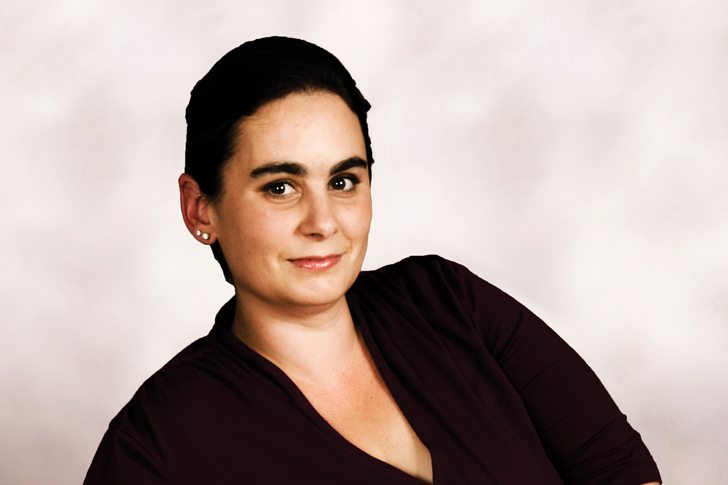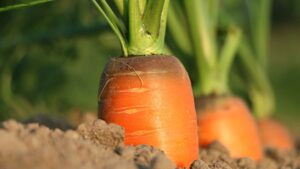The 2017 Future Giant of the industry award recipient says her ultimate career goal is very straightforward — to do plant pathology for as long as possible.
While the first words out of a child’s mouth are often “mama” and “dada,” Sierra Hartney’s mother told her that her first word was either “goat” or “flower.” And neither is a stretch considering Hartney grew up on a small farm in Okanogan County, Wash.
“I was raised around goats and chickens. We gardened and much of the food we ate we raised ourselves,” recalls Hartney, 37. “Both my parents loved the outdoors — always hunting, fishing, camping and hiking. The town where I grew up (at the base of the Cascade Mountains) has amazing views and is a nature lover’s paradise. Whenever my brother and I weren’t in school, my parents would take us camping or some other outdoor activity. My parents worked for the Forest Service and would take us along on botany surveys or native plant hikes.”
Today, as a plant pathologist at Sakata Seed America in Burlington, Wash., this position seems tailor-made for Hartney, who earned her doctorate in plant pathology from Oregon State University.
“School wasn’t always easy, but the sciences made sense,” she says. “With the background my parents gave me — through sharing their knowledge about botany and forestry — studying a plant-based science in college seemed feasible. I focused on microbiology and botany classes as well.
“I knew I couldn’t do human medicine, but I loved learn¬≠ing about diseases. Maybe plants get sick too. The Irish potato famine was caused by a plant pathogen. So, I asked my profes¬≠sors and started an internet search about plant diseases and how to study them.”
A master’s degree in plant pathology from Washington State University followed, and then a doctorate.
“I ended up with these great molecular projects that were very rewarding, but I always enjoyed the classes that took us out to the field more,” she says.
In her position at Sakata, Hartney is responsible for three types of pathology. Her main focus is breeder sup­port for spinach, beet/Swiss chard and pumpkin, which involves screening for resistance through lab tests, as well as greenhouse and field tests.
Hartney loves the diversity of her job. “I work with Sakata coworkers all over the globe, as beets and spinach are international crops. And, I have just enough travel to keep things interesting, but not so much that I can’t do my hands-on pathology work,” she says.
Hartney also says she is fortunate to work with a group of amazing people. “My coworkers at the Pacific Northwest Research Station are intelligent, creative, fun-loving and hard working,” she notes. “We work together to get any project done, and we know enough about each other’s programs that we can help when time or hands are short.”
What Her Colleagues Say
One of her colleagues, Jeff Zischke, is director of research for Sakata Seed and is based in Salinas, Calif. He interacts with Hartney a great deal given the critical role she plays in research and managing breeder support pathology in the west.
When asked his thoughts on her winning the Future Giant of the industry award, Zischke doesn’t mince words.
“Sierra is one of the most enthusiastic scientists I have ever had the pleasure to work with,” he says. “Scientific problems are just puzzles to be solved and people like her remind us how lucky we are to get to do what we do for a living.
“She is very fun to work with and also very smart. A plant breeder working on a crop that faces a daunting challenge, like downy mildew in spinach, needs someone with her optimism and determina¬≠tion to keep pace with the problem.”
Lindsey DuToit, a professor and Extension plant pathologist at Washington State University, is another colleague who cannot say enough positive things about Hartney.
“I get to interact relatively regularly with Sierra, either on specific projects, during seed grower and company meetings, or in collaboration with the American Seed Trade Association Vegetable Technical Committee. The motivation and desire to make a positive impact on the seed industry appears to be important criteria for this award, and Sierra certainly demonstrates both of these traits clearly in her work,” DuToit says. “Her energy and enthusiasm suggest she’ll continue to contribute to seed pathology for many years to come, and should become (if not already) a key member of the U.S. vegetable seed production and seed pathology world.”
When asked her own thoughts on receiving this prestigious award, Hartney says she was both honored and surprised.
“I knew that I was being nominated for some award as I was asked to provide my CV and such,” Hartney says. “But I didn’t know for what. I was just working and getting things done and lost track of the time frame.”
She thinks she was chosen for this award because of her active participation in the vegetable seed community and helping out wherever she can.
“I have a job to do, but I can also attend meet¬≠ings, talk to growers at trials, and volunteer to take notes or be on a committee, and ask questions about the bigger picture,” she says. “I am engaged and passionate about what I do. ”
Professor Joyce Loper couldn’t agree more. The two met when Hartney joined the Department of Botany and Plant Pathology at Oregon State University to begin her Ph.D. pro¬≠gram in the fall of 2006.
“At that time, Sierra had already received her Master of Science in plant pathology from Washington State University, and she came to OSU with a very strong endorsement from the faculty at Washington State,” recalls Loper. “I was delighted when she joined my research group and began her Ph.D. research focused on the biological control of plant diseases.
“From the first time we met, I have always loved to talk with Sierra about science, agriculture and life in general.”
Loper says Hartney possesses many of the attributes of a successful scientist: curiosity about the natural world, a personal mission to solve agri­cultural problems, a strong work ethic, integrity, a strong allegiance with the scientific community and a commitment to outreach.
“She takes joy in scientific discovery and loves to exchange ideas with other scientists,” Loper says. “While a graduate student at OSU, she pre¬≠sented her research at five national or international conferences, and she wrote grants to fund her travel to these conferences.
In addition to her scientific accomplishments, Sierra has an exemplary record of professional ser¬≠vice and outreach.”
What’s Next?
To help keep up with the industry needs and the latest research and technologies, Hartney attends annual meetings of the American Phytopathological Society, International Working Group on Peronospora based in The Netherlands and the Western Washington Small Seed Advisory Council based in Skagit Valley.
During the next few years for the vegetable seed industry, she sees the continuing development of global markets and global production of seed.
“For pathology, this means understanding phytosanitary requirements and how they might change,” she explains.
“And for developing disease resistance, an understanding of what diseases are impactful globally will be important.”
As for her ultimate career goals, they are very straightforward: To do plant pathology for as long as possible.
“Pathologists tend to have long shelf lives,” Hartney says. “I’m hoping that even if I can’t see the tiny spores on the underside of a spinach leaf — unless I have a magnifying glass — I will still be able to get out into the field and keep solving disease puzzles.
“I also enjoy teaching and education. I have gotten to speak to school kids, and it is so great to share where our food comes from. Sakata has provided me a climate in which I can thrive and give back. I hope to contribute for many years.”













